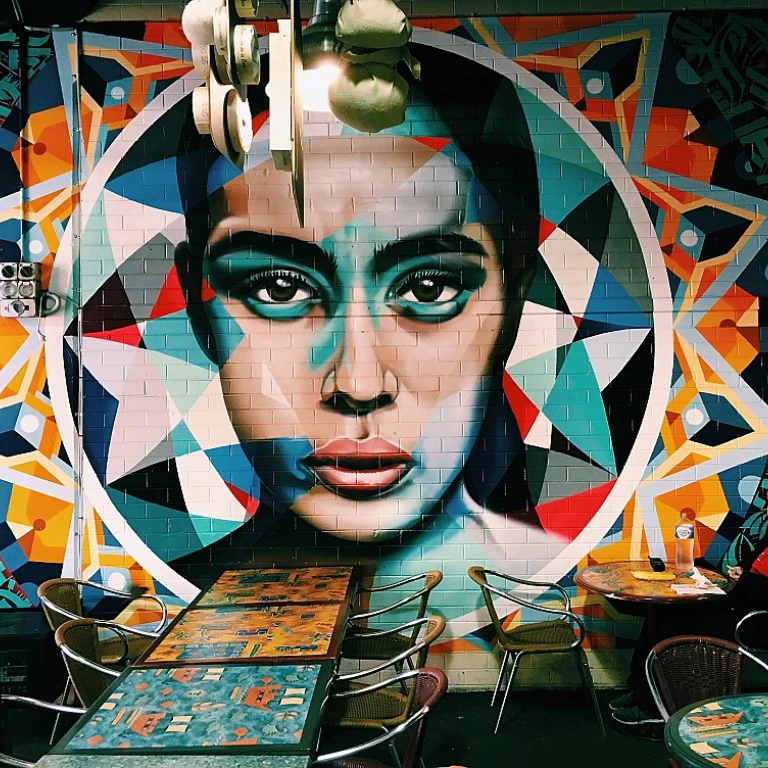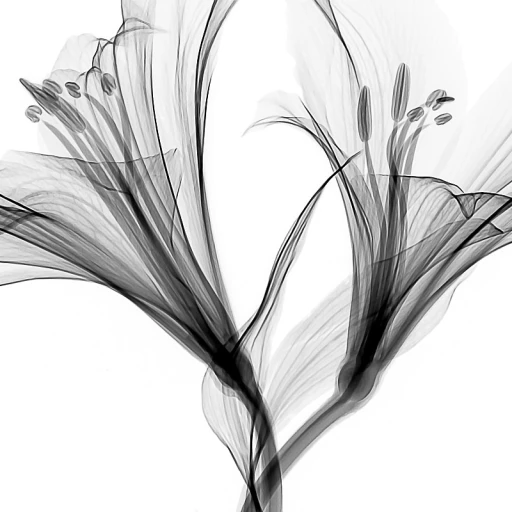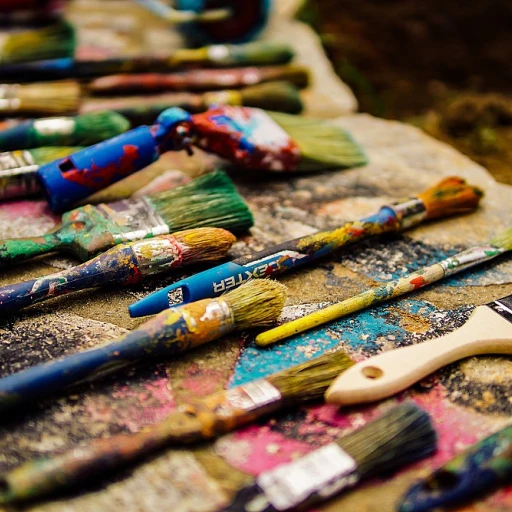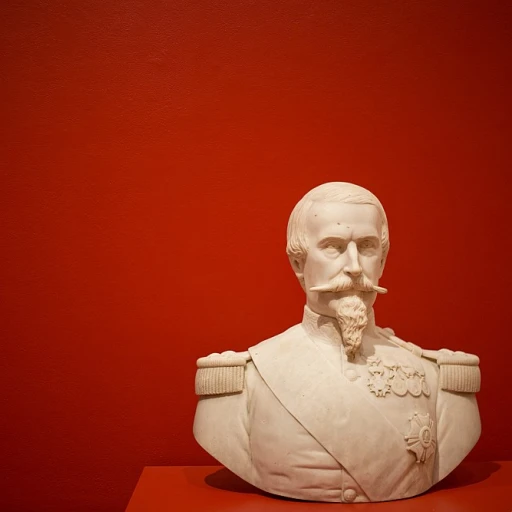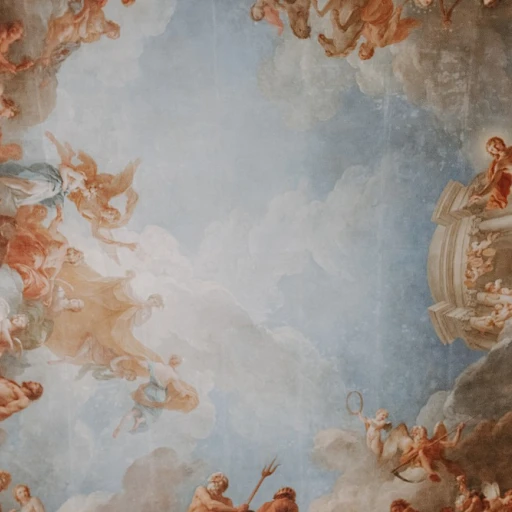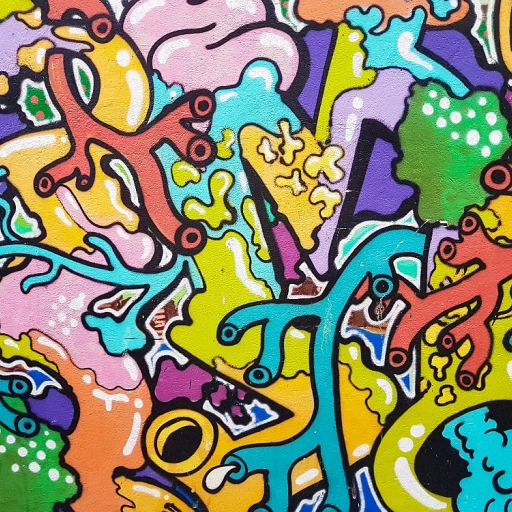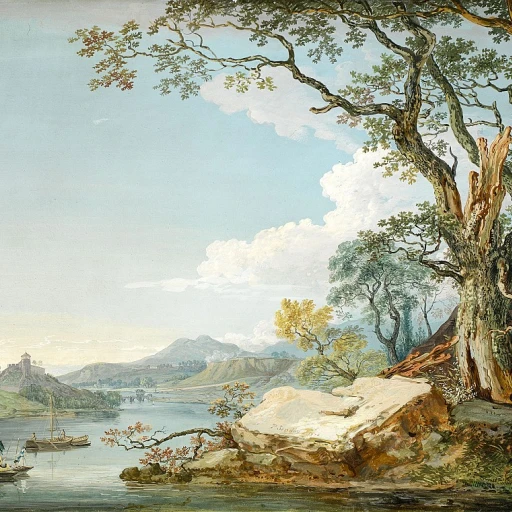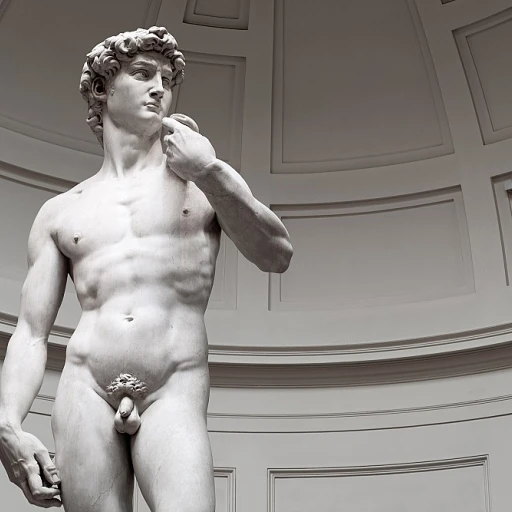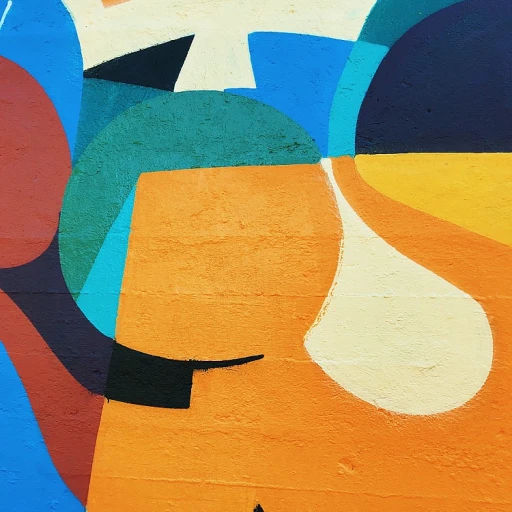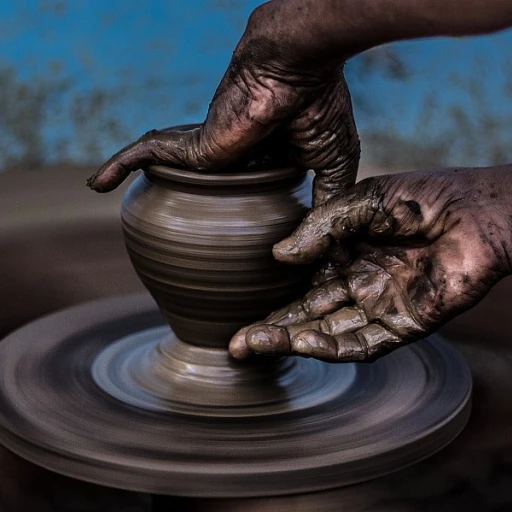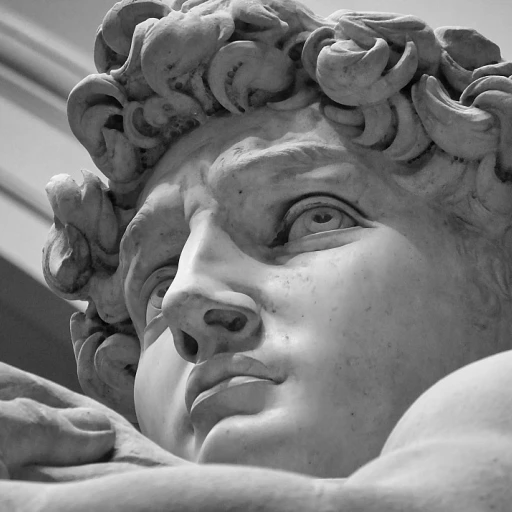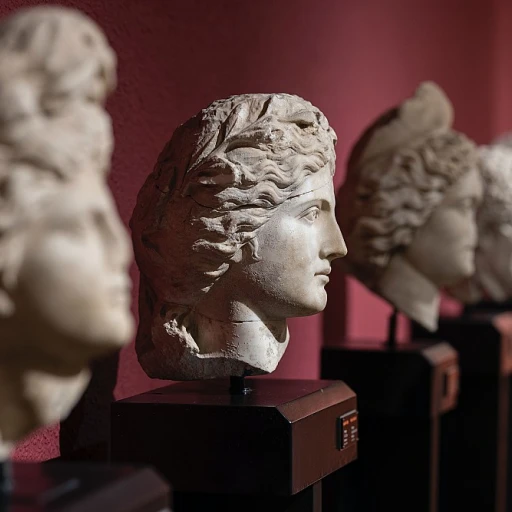-teaser.webp)
Understanding the Luxury Art Market
Deciphering the Complex Dynamics of High-End Art Segments
The luxury art market is a fascinating realm, characterized by its exclusive, often opaque nature. As an artist or art seller looking to engage with this market, it’s crucial to grasp the interplay of factors such as pricing, authenticity, and provenance that drive this elite sector.
Within this segment, fine art and antique masterpieces frequently attract significant interest and command hefty prices. Institutions and private collectors alike are often willing to acquire exquisite original paintings, oil canvas works, and even mixed media pieces that promise unique stories and unrivaled craftsmanship.
However, successfully selling art in this sphere requires more than just offering art pieces for sale. A deeper understanding of potential buyers’ motivations and collecting habits is essential. These range from building personal art collections to seeking art antiques as valuable estate investments. Recognizing these motivations can guide artists in presenting their artwork in a way that resonates deeply with prospective buyers.
The demand for art antiques and antique paintings continually evolves. Therefore, adaptability is key in navigating this landscape—awareness of trends from Asian art to modern and American art can shape selling strategies. Artists should also be prepared for the growing interest in both contemporary and classical art styles.
By delving into this complex market, artists can better position themselves to attract collectors who appreciate and are willing to invest in sophisticated art experiences. Understanding these dynamics not only aids in selling art at the best price but also in establishing long-term connections with elite art collectors.
To further immerse yourself in the nuances of luxury art transactions, exploring resources on exquisite artworks can offer invaluable insights.
Who Are the Elite Art Collectors?
Identifying the Players in the Art Market
When navigating the vast landscape of the luxury art market, it's crucial to understand who the key players are. Elite art collectors often come from diverse backgrounds, yet share common characteristics that set them apart. They are not merely buyers; they are connoisseurs of fine art, antiques, and unique artwork, driven by a passion for collecting and an eye for aesthetic value.
Traits of Elite Art Collectors
Elite art collectors typically possess certain key traits, including:
- Discerning Eye: They have an innate ability to distinguish original paintings from a sea of reproductions, always seeking authenticity and quality.
- Financial Acumen: With the ability to buy, sell, and invest in fine art, they understand art as an asset, making strategic purchases for their collection and estate.
- Passionate Knowledge: These collectors spend years studying art movements and genres, from American art and modern/Asian art to mixed media and oil canvas, ensuring they are well-informed about art market trends.
- Networking Prowess: Building relationships with artists and other art collectors is second nature to them, expanding their network within local and international art networks.
The Appeal of Fine Art Collection
For many elite collectors, assembling a fine art collection isn't merely about investment or prestige. They are drawn to artworks that evoke emotion, tell a story, or represent a part of cultural heritage. Some of the most sought-after pieces include antique paintings and rare art antiques, which offer a glimpse into history alongside the appeal of modern works. To get a clearer picture, explore the allure of premium 11x14 art prints.
By understanding these collectors, artists and sellers can better tailor their approaches to meet their potential buyers' expectations. This knowledge is indispensable for anyone aiming to thrive in the luxury art sphere, turning fleeting interest into lasting relationships.
Navigating Local Art Networks
Exploring Established Art Circles and Galleries
Embarking on a journey within the local art networks can be both thrilling and rewarding. As an artist or art enthusiast aiming to reach elite art collectors, understanding the dynamics at play in these established circles will significantly influence your engagement and success. Networking within this realm often begins with the fine art galleries that serve as the heartbeat of the community. These venues often host events that draw avid art buyers and collectors interested in discovering original paintings, modern art, or even unique antique art. Connect with gallery owners who might offer platforms for showcasing diverse pieces, from antique paintings to avant-garde oil canvas artworks.Participating in Prestigious Art Fairs
Art fairs are another essential avenue for navigating local art networks. These gatherings provide occasions to mingle with other artists, collectors, and art enthusiasts in a setting that celebrates fine art in all its forms. Here, you’re likely to encounter art antiques and mixed media pieces that captivate seasoned collectors. Make a conscious effort to offer a compelling presentation of your work, highlighting what sets your collection apart in terms of originality and artistic value.Immersing in Community Art Initiatives
Community art initiatives and cultural events serve as gateways to understanding the local art market landscape. Participating in these events allows you to showcase your artworks and engage with potential buyers who appreciate exclusive art collections. Keep an eye out for opportunities where your creations could share the spotlight with renowned American art pieces or attract interest through their unique aesthetic appeal. Having a robust contact network with individuals and organizations within these established art circles will inevitably pave the way for successful introductions and collaborations. To assist your understanding of elite art collectors’ preferences, the intricate allure of nude art in luxury collections can serve as a guide: discover more.Building Relationships with Art Collectors
Fostering Genuine Connections with Collectors
Building relationships with elite art collectors requires more than just showcasing your fine art or antique paintings. It involves creating genuine connections that transcend the transactional nature of buying and selling art. Here are some strategies to consider:
- Attend Art Events: Regularly participate in art fairs, exhibitions, and gallery openings. These events are prime opportunities to meet art buyers and collectors who are passionate about expanding their art collection. By engaging in conversations, you can share insights about your artwork and learn about their interests.
- Join Art Networks: Become a member of local art networks or clubs. These communities often include both artists and collectors, providing a platform to discuss the art market, fine art trends, and opportunities for selling art. Networking within these groups can help you gain visibility among potential buyers.
- Offer Exclusive Previews: Providing collectors with a sneak peek of your upcoming artworks sale can create a sense of exclusivity. Whether it’s a new oil canvas or a mixed media piece, offering collectors the first opportunity to buy can strengthen your relationship.
- Personalized Communication: Maintain regular contact with collectors through personalized emails or messages. Share updates about your latest projects, exhibitions, or any antique art pieces you have acquired. This keeps them engaged and interested in your work.
- Value-Added Offers: Consider offering free consultations or personalized art recommendations. This demonstrates your expertise and willingness to go the extra mile, fostering trust and loyalty among collectors.
By focusing on these relationship-building strategies, artists can create a supportive network that not only helps sell fine art but also contributes to a thriving art market. Remember, the key to success lies in nurturing these connections over time, ensuring that both you and the collectors benefit from a mutually enriching experience.
Showcasing Your Artwork to Attract Buyers
Exhibit with Elegance
Displaying your artwork in a way that captivates potential buyers is paramount to attracting the right audience. Fine art requires a space that not only showcases its beauty but also resonates with the emotions and intentions behind each piece. When planning an exhibition, consider the following strategies to enhance visibility and allure:- Curate Thoughtfully: Arrange your collection to tell a story. Whether focusing on modern art, antique pieces, or the nuances of an oil canvas, allowing each artwork to complement the next can create a narrative that speaks to potential buyers.
- Highlight Unique Features: If you're dealing with mixed media or antique paintings, ensure these pieces receive appropriate lighting and positioning to draw attention to their distinctive aspects.
Create Engaging Art Events
Hosting an exclusive art event can be an excellent approach to engage with collectors and art buyers in your community. Create an event that not only showcases your work but also offers attendees an experience:- Personal Tours: Offer guided tours that delve into the details of American art or Asian art pieces. This personalized touch can intrigue buyers and enhance their understanding of your work.
- Interactive Sessions: Provide opportunities for attendees to engage with the art or even the artists. Such interactions can leave a lasting impression and potentially result in an art sale.
Offer Flexible Buying Options
To attract serious collectors, flexibility in payment and purchasing options can be pivotal. Consider offering:- Free Consultations: Arrange meetings to discuss potential acquisitions and their fit within the buyer’s current art collection or estate.
- Competitive Pricing: Ensure your artwork is priced competitively within the current art market to foster interest among discerning art antiques collectors.
Leveraging Technology to Reach Art Collectors
Embracing Digital Platforms for Art Visibility
In the contemporary art market, technology plays a pivotal role in connecting artists with elite art collectors. As an artist or gallery owner, leveraging digital platforms can significantly enhance your reach and visibility. Whether you are selling fine art, antique paintings, or modern art, the right online presence can make all the difference.
Utilizing Online Art Marketplaces
Online marketplaces dedicated to art selling provide an excellent avenue for showcasing your artwork. These platforms often attract serious art buyers who are looking to buy original paintings, mixed media pieces, and even art antiques. By listing your artworks for sale on these platforms, you can reach a broader audience and potentially secure the best price for your creations.
Social Media: A Tool for Engagement
Social media platforms offer a free and effective way to engage with potential buyers and art collectors. By sharing high-quality images of your oil canvas paintings or antique art pieces, you can attract interest and initiate contact with art enthusiasts. Regular updates about your art collection or upcoming exhibitions can keep your audience engaged and informed.
Building a Professional Website
A professional website acts as a digital gallery where you can showcase your fine art, provide detailed information about each piece, and offer insights into your artistic journey. Including a blog section can further enhance your site's visibility, drawing in art lovers who appreciate both the visual and narrative aspects of your work.
Virtual Tours and Online Exhibitions
With advancements in technology, offering virtual tours or online exhibitions can provide a unique experience for art collectors. This approach allows potential buyers to view your art collection from the comfort of their estate, making it easier for them to decide to buy. Such immersive experiences can significantly enhance your art selling strategy.
Networking Through Online Communities
Participating in online art communities and forums can help you connect with other artists and collectors. These platforms are excellent for sharing insights, discussing trends in the art market, and even collaborating on projects. By actively engaging in these communities, you can build relationships that may lead to future opportunities for selling art.

